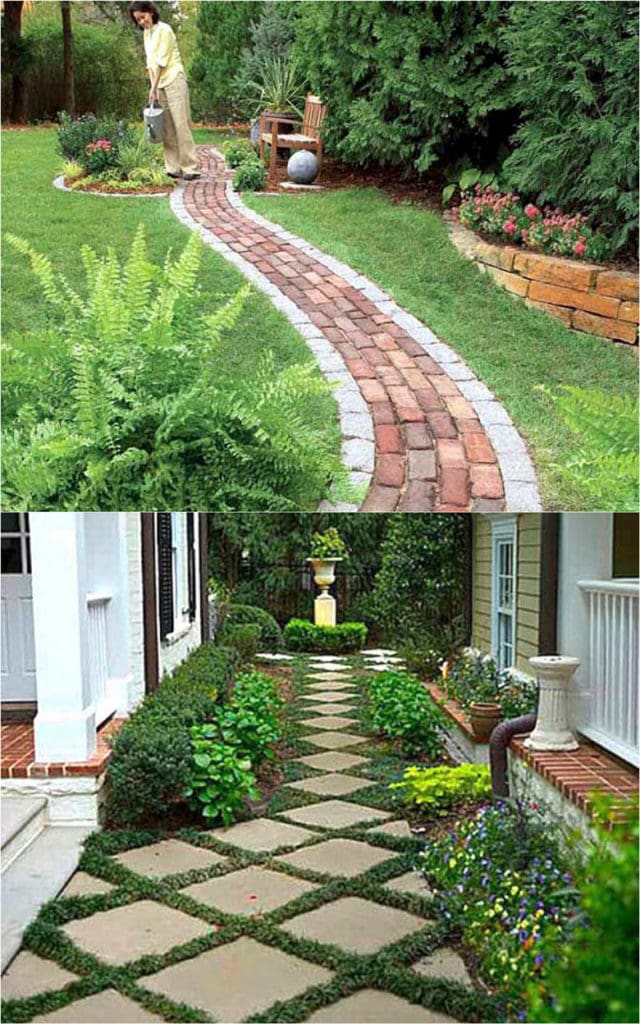Creating a beautiful garden path doesn’t have to break the bank. With cheap DIY garden path ideas, it’s possible to add charm and functionality to your outdoor space on a budget. Whether you’re a seasoned DIYer or a beginner, there are plenty of creative and cost-effective ways to build a path that both enhances your garden’s aesthetic and provides a durable walkway.
From utilizing affordable materials to implementing simple construction tips, we’ll explore 10 ways to build a path for less. So roll up your sleeves and get ready to transform your garden with these inspiring ideas that won’t leave your wallet empty.
What are the best cheap DIY garden path ideas?
When it comes to adding a touch of personality and practicality to your garden, a DIY path is an excellent choice. The best cheap DIY garden path ideas include using materials like pea gravel, mulch, and reclaimed brick. These options offer both affordability and style, allowing you to create a pathway that suits your taste and budget.

Pea gravel and mulch are especially popular for their low cost and easy installation. Creative arrangements of stepping stones or repurposed wood can also result in stunning pathways without a hefty price tag. With a little imagination and effort, you can craft a garden path that’s both beautiful and budget-friendly.
Consider blending different materials or adding borders with inexpensive pavers to give your path a unique touch. Remember, the key to a successful DIY project is to plan your design carefully and choose materials that will stand up to the foot traffic and weather conditions in your area.
How do you create an affordable garden path?
Creating an affordable garden path starts with careful planning and selection of the right materials. First, define the route of your path and consider its purpose. Will it be a functional walkway or a decorative element in your garden? Answering these questions will help you determine the best approach for your project.

Next, choose budget-friendly materials such as pea gravel, mulch, or repurposed bricks. These options are not only inexpensive but also easy to work with, making them ideal for DIY enthusiasts. You can also look for sales or discounts at local hardware stores or landscaping supply shops to reduce costs even further.
When laying out your path, use a hose or rope to outline its shape before you start digging. This will give you a clear visual guide and help prevent mistakes. Don’t forget to consider drainage and the potential for weed growth; using landscape fabric underneath your path materials can mitigate these issues.
What materials are suitable for budget-friendly garden paths?
There are many materials that are both suitable and budget-friendly for garden paths. Some of the most cost-effective options include:

- Pea gravel: It’s easy to install and provides good drainage.
- Mulch: It’s readily available and can add a natural look to your pathway.
- Flagstone: Offers a rustic charm and can sometimes be sourced for free or at a low cost if you use reclaimed pieces.
- Bricks: Can be used in a variety of patterns and can often be found for free if they are reclaimed.
- Decomposed granite: Provides a stable surface and comes in various colors.
These materials not only save you money but also contribute to a more natural and cohesive garden design. It’s important to consider the pros and cons of each material and how they will fit into your garden’s overall aesthetic and functional needs.
How wide should a DIY garden path be?
The width of your DIY garden path should be determined by its intended use. A general rule of thumb is to make it wide enough for two people to walk side by side, which is typically around 3 to 4 feet. However, if your path is purely decorative or leads to a small garden feature, a narrower width might be suitable.
Always consider the scale of your garden when deciding on the width of your path. A path that’s too wide in a small garden can overpower the space, while a path that’s too narrow in a large garden might look out of proportion. Adequate width ensures practicality and enhances the overall design of your garden.

What are the advantages of using natural materials in garden paths?
Natural materials like stone, gravel, and wood bring a host of advantages to garden paths. They blend seamlessly with the outdoor environment, enhancing the garden’s aesthetic appeal. Additionally, natural materials often require less maintenance than man-made alternatives and can be more environmentally friendly.
Using natural materials also allows for better water permeability, reducing runoff and preventing soil erosion. This can be crucial in maintaining the health of your garden beds and preserving the quality of your soil.
Moreover, natural materials like flagstone and pea gravel can be sourced locally, which can further reduce costs and support your community’s economy. They also offer flexibility in design, allowing you to create a custom path that fits perfectly with the contours and style of your garden.

 Natural pools: 10 stunning designs and ideas for your backyard
Natural pools: 10 stunning designs and ideas for your backyard
